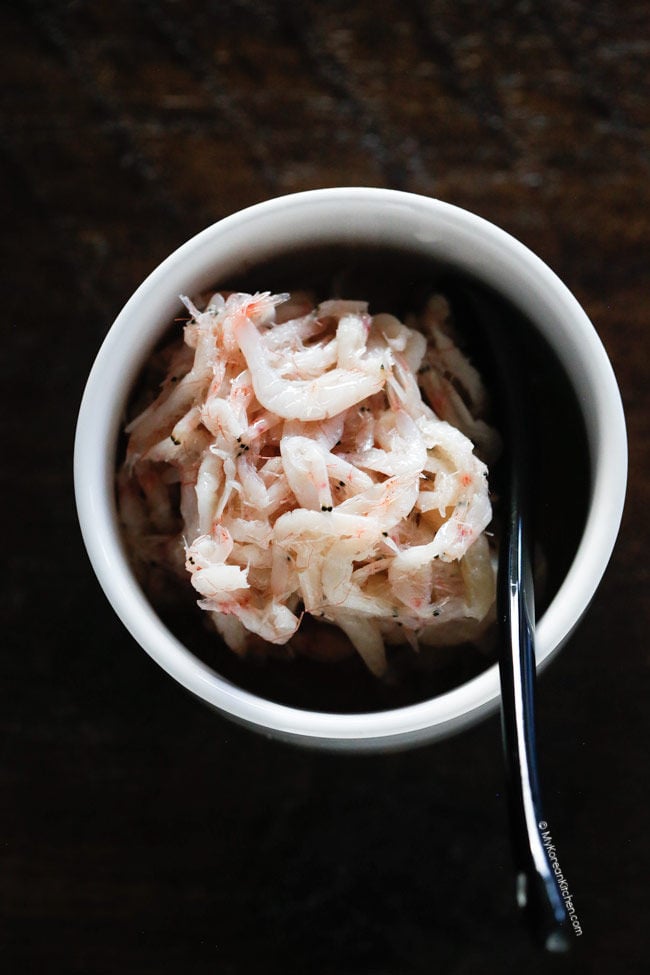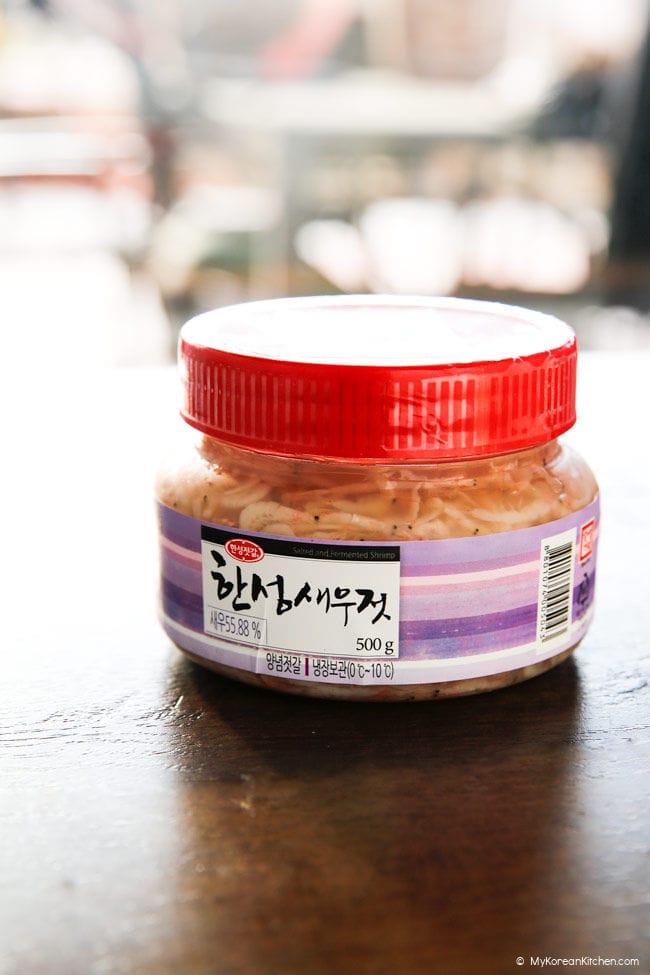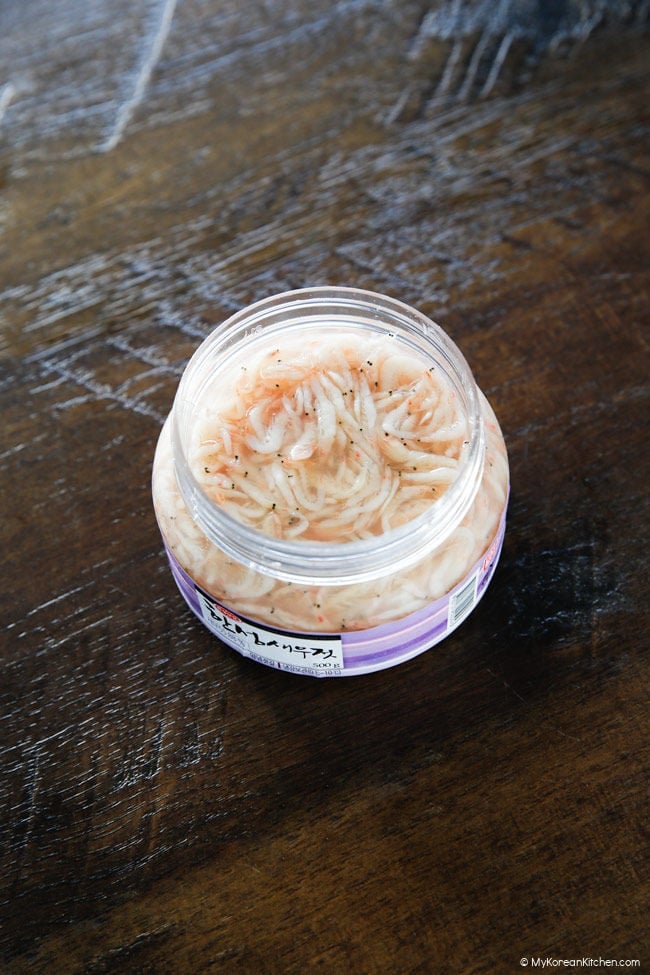Saeujeot is a traditional Korean condiment made by fermenting salted shrimp. This umami-rich ingredient adds depth to the dish and has a fishy smell and strong salty taste. Learn how to use it below!

What is Saeujeot?
Saeujeot, Saeujot, or Saeu-jeot (새우젓), also known as Korean salted shrimp, is a traditional fermented food product made by preserving shrimp in salt.
The shrimp used for making saeu-jeot are called jeot-saeu (젓새우) and they belong to the genus Acetes. They are smaller and have thinner shells than ordinary shrimp. It is said that the best quality fermented salted shrimp is made with June-caught shrimp (by the lunar calendar).
Salted shrimp is typically preserved in a large barrel with a layer of salted shrimps in the bottom and a layer of salt on top. The barrel is then sealed to keep out oxygen and matured for many months in the shade at a low temperature.
During the fermentation process, naturally occurring lactic acid bacteria and enzymes break down proteins in the shrimp and create umami flavor compounds.
Fermented shrimp looks pale pink and white, with a clear-ish, milky brine. It has a strong fishy smell and is very salty.
How To Use Saeujeot
Saeujeot is most often used in making kimchi, but it’s also an important ingredient in a number of Korean dishes, including steamed eggs and soups.
One of its most attractive features is that it provides depth and complexity to your dish without overpowering other ingredients. It is good to note that saeujeot can be a bit strong and has a high salt content, so you should take that into account when cooking recipes.

Recipes Using Saeujeot
Check the recipes below to see how I use seaujeot in my cooking.
- Napa Cabbage Kimchi
- Cucumber Kimchi
- Salted Shrimp Sauce (as a dipping sauce) for Bossam (Korean pork lettuce wrap) or Jokbal (Braised pig’s trotters)
- Korean Steamed Egg (Gyeran Jjim), I used Korean fish sauce in this recipe, but it is more common to use saeujeot instead.
Saeujeot Substitutes
I think saeujeot is one of a kind Korean condiment, and finding a good substitute would be very difficult.
That being said, as long as you’re not after the texture of saeujeot, in most cases, you can use Korean fish sauce (e.g. anchovy sauce) instead.
I’ve seen some people use Thai shrimp paste with mixed success, but since I haven’t tried it myself, take this information only for what it’s worth. I think a safer substitute is using Korean fish sauce.
If you are vegan, you could use vegan fish sauce, soy sauce, or red miso paste depending on the recipe. Obviously, not all of these ingredients will work for every dish that calls for saeujeot. To be more universally compatible, I think vegan fish sauce might be better.

How Long Does Saeujeot Last?
The shelf life of saeujeot depends on the freshness of the ingredients and how it’s stored, but it will keep for a long time in general.
Saujeot should be stored in an air tight container and in the refrigerator as soon as you purchase it. Typically, it lasts six months to a year. However, always check the expiration date set by the manufacturer.
That being said, the salted shrimp will continue to ferment while refrigerated, so if you want to keep it fresh for a longer period of time, you should store it in the freezer. It does not freeze solid due to its high salt content, so you won’t need to defrost it before using it.
When salted shrimp deteriorates, it turns dark and the meat becomes brittle. The liquid becomes cloudy, and it smells bad.
Where To Buy Saeujeot
Typically, you can buy saeujeot from a Korean grocer, especially where there is a large Korean population. Meaning, not all Korean grocers will have it. Look in the refrigerator or freezer section.
Additionally, when you buy it, look for ones that have a lighter color and shrimps that seem whole/unbroken overall.
Love Korean food? Browse lots more Korean recipes from my easy Korean recipe collections. And subscribe to my newsletter and follow along on Facebook, Pinterest and Instagram for all of the latest updates.



